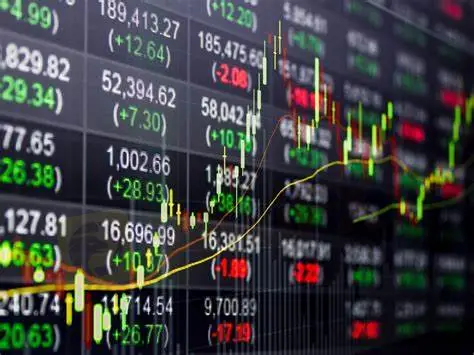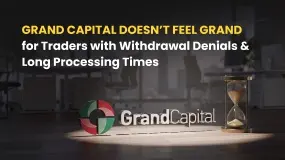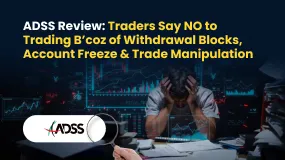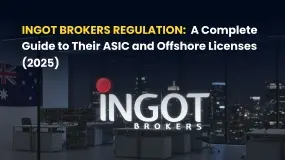简体中文
繁體中文
English
Pусский
日本語
ภาษาไทย
Tiếng Việt
Bahasa Indonesia
Español
हिन्दी
Filippiiniläinen
Français
Deutsch
Português
Türkçe
한국어
العربية
Understanding Market Capital in Stock Trading: A beginner’s guide for South African Traders.
Abstract:Market capitalization refers to the total dollar value of all outstanding shares of a company at the current market price. It is simply the aggregate invested capital of a company represented in a dollar amount.
By: Chime Amara

What is Market capitalization?
Market capitalization refers to the total dollar value of all outstanding shares of a company at the current market price. It is simply the aggregate invested capital of a company represented in a dollar amount. Since it represents the “market” value of a company, it is computed based on the current market price (CMP) of its shares and the total number of outstanding shares. Similarly, Market capitalization, also known as “market cap”, is also used to compare and categorize the size of companies among investors and analysts.
How to calculate Market Capital
Market cap is calculated by multiplying a company's outstanding shares by the current market price of one share. Since a company has a given number of outstanding shares, multiplying X with the per-share price represents the total dollar value of the company.
Formula and Calculation
The formula for market cap is:
{Market Cap} = {Price Per Share} X { Outstanding Shares }
Market Cap = Price Per Share X Outstanding Shares
Types of Market Capitalization
There are broadly six main classification of Market capital such as: Mega Cap, Large Cap, Mid Cap, Small Caps, Micro Cap and Nano Cap. A little explanation for each can be seen below:
Mega Cap
This refers to companies with a market cap of $200 billion and above. They are the largest publicly traded companies by market value, and typically represent the leaders of a particular industry sector or market. Only a few companies qualify under this category due to the large amount of capital involved.
For instance Apple (AAPL) has a market cap of over $2.3 trillion, while online retailer Amazon.com (AMZN) stands next with over $1.67 trillion market cap.
Large Cap
These refer to those companies with a total market cap between $10 billion to $200 billion. For example, International Business Machines Corp. (IBM) and General Electric (GE) are large-cap stocks with market caps of $125 billion and $117 billion, respectively.
Both mega and large-cap stocks caps are referred to as blue chips and are considered to be relatively stable and secure. However, there is no guarantee of these companies maintaining their stable valuations as all businesses are subject to market risks.
Mid Cap
Mid-cap is the term given to companies with a market capitalization—or market value—between $2 and $10 billion.
Small Caps
A small-cap stocks refers to those that has a total share value of $300 million to $2 billion, although the precise figures used vary among brokerages. Small cap here is used to refer to those young companies that may have promising growth potential, a few established old businesses which may have lost value in recent times for a variety of reasons also figure in this list.
Micro Cap
Companies that are considered micro-cap consist mostly of penny stocks—this category denotes companies with market capitalizations between $50 million to $300 million. Often Micro cap refers to those companies that are still at their developmental stage. While the upward potential of such companies is high if they succeed, the downside potential is equally worse if they completely fail. Investments in such companies may not be for the faint-hearted and require more due diligence.
Nano Cap
Nano cap refers to small, publicly traded companies with a market capitalization below $50 million. Often, the Nano market caps have a high-risk, high-reward layer beyond the micro-caps. These companies are considered to be the riskiest, and the potential for gain varies widely.

Disclaimer:
The views in this article only represent the author's personal views, and do not constitute investment advice on this platform. This platform does not guarantee the accuracy, completeness and timeliness of the information in the article, and will not be liable for any loss caused by the use of or reliance on the information in the article.
Read more

InterTrader Exposed: Traders Report Unfair Account Blocks, Profit Removal & Additional Fee for Withd
Does InterTrader block your forex trading account, giving inexplicable reasons? Does the broker flag you with latency trading and cancel all your profits? Do you have to pay additional fees for withdrawals? Did the UK-based forex broker fail to recognize the deposit you made? Does the customer service fail to address your trading queries? In this InterTrader review article, we have shared such complaints. Read them out.

Grand Capital Doesn’t Feel GRAND for Traders with Withdrawal Denials & Long Processing Times
The trading environment does not seem that rosy for traders at Grand Capital, a Seychelles-based forex broker. Traders’ requests for withdrawals are alleged to be in the review process for months, making them frustrated and helpless. Despite meeting the guidelines, traders find it hard to withdraw funds, as suggested by their complaints online. What’s also troubling traders are long processing times concerning Grand Capital withdrawals. In this Grand Capital review segment, we have shared some complaints for you to look at. Read on!

ADSS Review: Traders Say NO to Trading B’coz of Withdrawal Blocks, Account Freeze & Trade Issues
Does ADSS give you plenty of excuses to deny you access to withdrawals? Is your withdrawal request pending for months or years? Do you witness account freezes from the United Arab Emirates-based forex broker? Do you struggle to open and close your forex positions on the ADSS app? Does the customer support service fail to respond to your trading queries? All these issues have become a rage online. In this ADSS Broker review article, we have highlighted actual trader wordings on these issues. Keep reading!

INGOT Brokers Regulation 2025: ASIC vs Offshore License - What Traders Must Know
Explore INGOT Brokers regulation in 2025: Compare their ASIC and Seychelles FSA licenses, understand trader protection levels, and learn about potential risks in this detailed guide.
WikiFX Broker
Latest News
Mitrade Arabic Platform Targets MENA Gold Trading Boom
Israeli Arrested in Rome Over €50M Forex Scam
New FCA Consumer Alert 2025: Important Warning for All Consumers
EmiraX Markets Withdrawal Issues Exposed
Consob Targets Political Deepfake “Clone Sites” and Unlicensed Platforms in Latest Enforcement Round
WikiEXPO Global Expert Interviews: Gustavo Antonio Montero: ESG in Finance
Scam Alert: GINKGO-my.com is Draining Millions from Malaysians!
The Debt-Reduction Playbook: Can Today's Governments Learn From The Past?
Polymarket Onboards First US Users Since 2022 Shutdown: Beta Relaunch Signals Major Comeback
US Seizes US15 Billion in Bitcoin as Prince Group Rejects Crypto Scam Allegations
Currency Calculator



